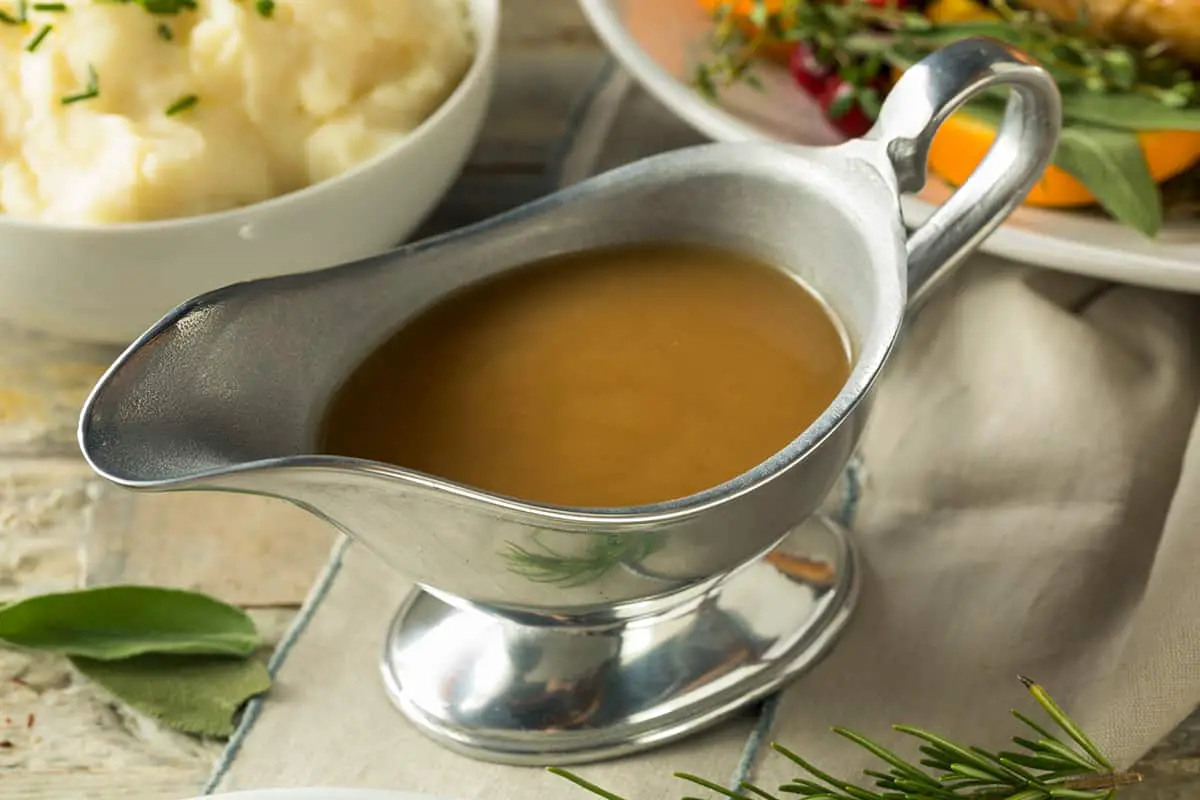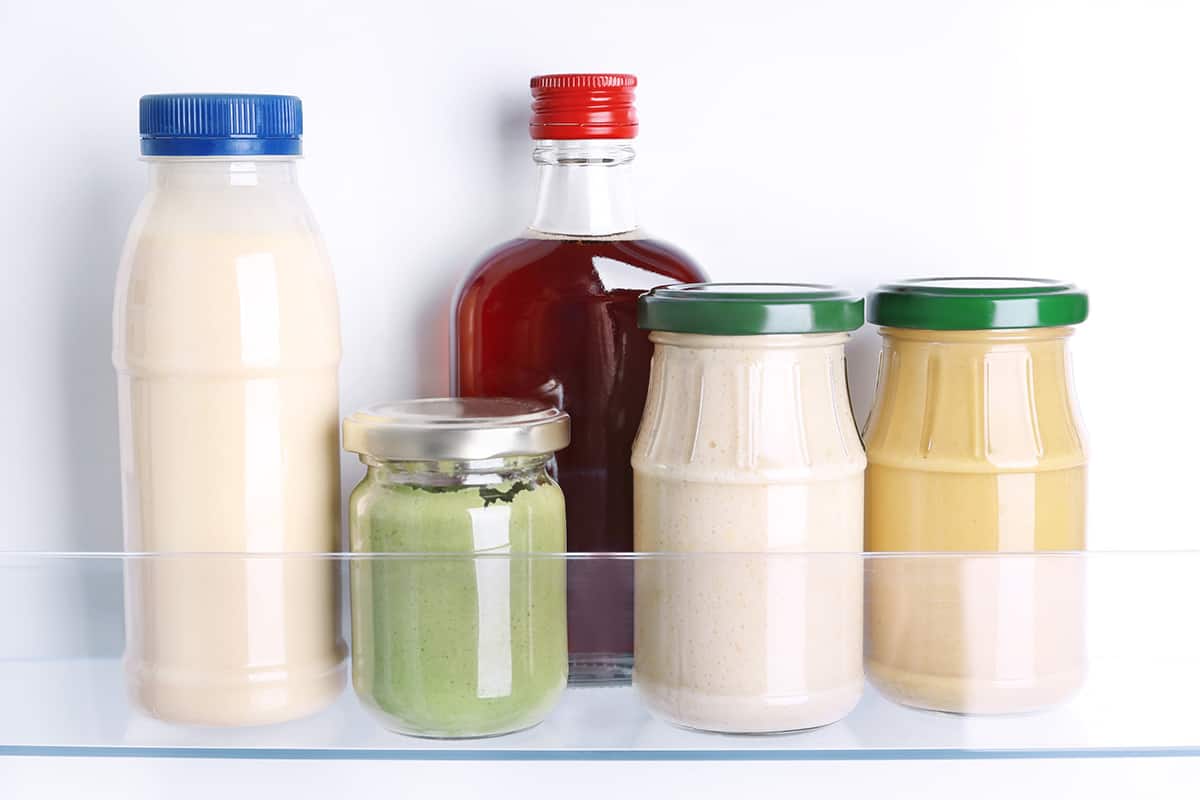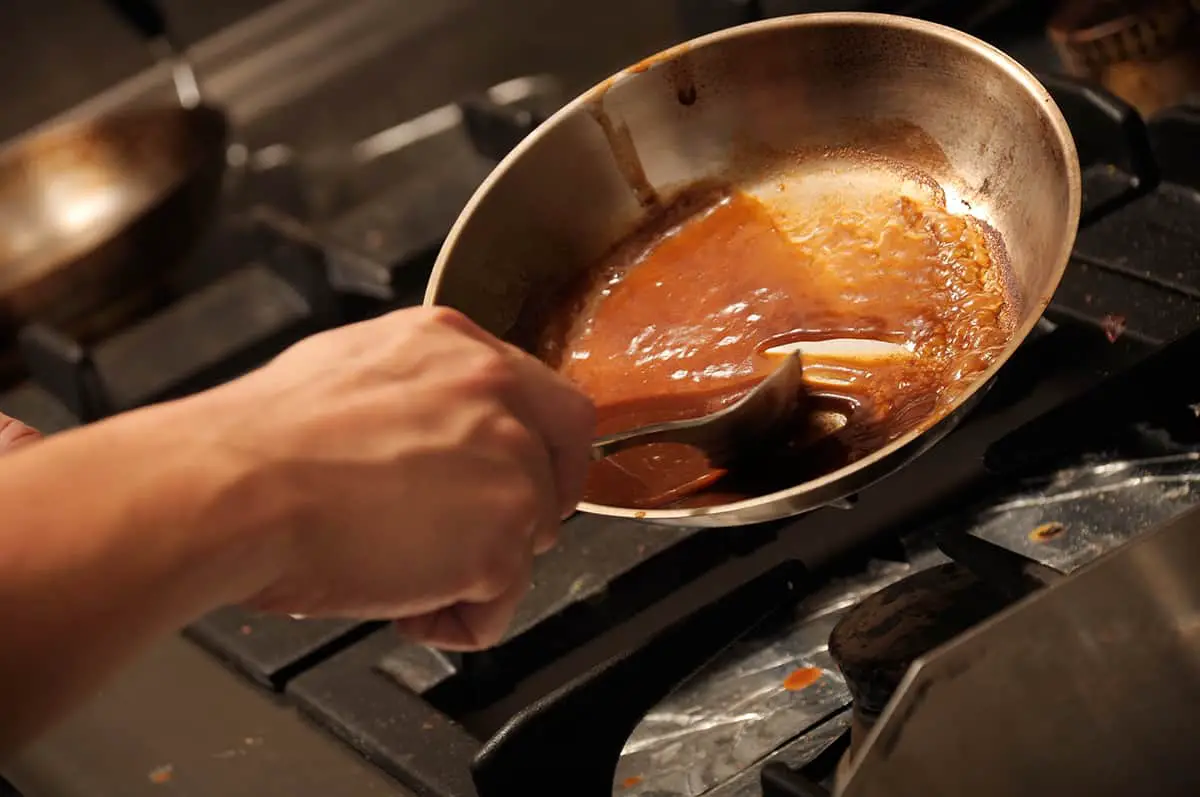How to Freeze and Reheat Leftover Gravy (Explained)
Freezing food is one of the best ways to preserve leftovers, store dishes you’ve prepared ahead of time, and stock up on items that are frequently used or hard to find. However, freezing is far from perfect because some foods simply don’t freeze well. Emulsified items like salad dressing and mayonnaise tend to separate after thawing, but what about gravy? Can you freeze gravy?
You can freeze gravy. Like other liquids, gravy will turn solid in your freezer. For proper storage, allow your gravy to cool down before spooning it into freezer-safe containers and placing it in your freezer for 4-6 months.
Below, you’ll learn about some of the best techniques for preserving your gravy. I’ll also answer how long you can keep gravy frozen, how to thaw and reheat it, and how to fix curdled gravy.

Best Practices for Freezing Your Gravy
Freezing gravy isn’t too complicated of a process, but there are a handful of things you can do to maximize quality and convenience.
For freezing gravy, follow these basic steps:
- Cool the gravy to room temperature or below.
- Choose an appropriate storage container.
- Label and date the container for future reference.
- Leave room for expansion.
Cool Your Gravy Properly Before Storage
Don’t be too quick to stick your gravy into the freezer. In fact, you should allow it to cool to at least room temperature before storing.

Here are a few reasons why you need to let your gravy cool down:
- Hot gravy produces water vapor that causes moisture to accumulate inside the storage container. The result is the formation of too many ice crystals that might give your gravy that freezer burnt taste once it’s thawed out.
- The heat from the gravy may partially thaw surrounding food items. This may not only affect the flavor but could also foster bacterial growth.
- Excess moisture could cause ice to build up inside the freezer itself. This makes defrosting your freezer much harder, and you’ll have to do it more often.
- Hot gravy may take longer to cool down, which would give bacteria more time to grow. Microbes thrive in warm sauces, especially when it’s a protein-rich one like gravy.
Believe it or not, there’s a proper way to cool down your gravy, or any food for that matter. The U.S. Department of Agriculture (USDA) suggests a two-stage cooling process that’ll be your best defense against bacteria growth.
The USDA considers the temperature danger zone to be between 135°F and 41°F (57.2°C – 5°C). Moving your food through this temperature range as quickly as possible will be the best way to slow the growth of bacteria. But, for the reasons mentioned above, you shouldn’t stick it directly into the freezer.
Instead, you can do the following:
- Separate your gravy into smaller containers to speed up cooling.
- Place the gravy pot or small containers in an ice bath.
Alternatively, you could put the pan of gravy into the refrigerator uncovered, but you might risk warming up the surrounding food items.
Freezing Gravy in the Right Storage Container
When you’re trying to decide on a storage container, consider how much gravy you’ve got and how you plan to use it in the future.
Typically, using plastic containers or plastic freezer bags is the way to go. This allows you to separate the sauce into smaller portions, so you won’t need to thaw it all at once. Plastic freezer bags are particularly strategic as they can lie flat in the freezer to save space.
Ensure that the plastic bags you’re using are labeled as freezer-safe. Some plastic bags might tear after the gravy freezes and expands.
The smaller the bag/container, the easier it’ll be to thaw the gravy in the future. Having several bags of gravy means you can thaw it only as needed instead of continually reheating and freezing. Doing so might hurt the flavor and promotes microbial growth.
Remember that you shouldn’t use glass containers to freeze your gravy. While it might work fine, you don’t want the expansion of the sauce to crack or shatter the glass and create a dangerous mess in your freezer.
Leave Room for The Gravy to Expand
Like any other liquid, your gravy will expand in the freezer. If you’re using plastic containers, leave some space at the top.
Don’t overfill plastic bags, and remember to squeeze out all of the air before sealing them. Doing this will allow the gravy to expand. And, as long as the bags are freezer-safe, you shouldn’t face any issues.
Labeling Your Frozen Gravies
Labeling the containers of gravy would be wise if you’re not sure when you’ll be using it again.
Write the date on the container so that if months happen to pass, you’ll know for sure if the gravy can still be used.
Since regular paper and sticky notes may absorb moisture in the freezer, use parchment paper instead.
How Long Can You Keep Gravy Frozen?
In general, you can keep your gravy frozen for about 4-6 months. While the gravy isn’t necessarily inedible after that period, you may see a significant decline in quality. Freezer burn will begin to develop, and you’ll probably have to throw it away.
The USDA recommends storing gravy in the fridge for 3-4 days or the freezer for 4-6 months. You can split your gravy batch so that you have some gravy on hand in the next couple of days, and everything else can go into the freezer.
Thawing and Reheating Frozen Gravy
If you’ve frozen your gravy in smaller portions, it should thaw out pretty quickly. Generally, you can thaw the sauce the same way you thaw anything else, but ideally, you’ll want to use one of the following three methods:
- Putting it in the refrigerator the night before.
- Placing the frozen container in cold water.
- Using the defrost mode on your microwave.
Avoid leaving the container of gravy out on the kitchen counter. Allowing it to reach room temperature promotes bacterial growth.
The refrigerator is probably your number one choice. If your gravy containers are small enough, you won’t have to wait long. However, it’s easy to forget, and if you’re crunched for time, the microwave will work fine too.
How To Reheat Your Gravy
You could technically heat the gravy all the way through in the microwave. You might not get the consistency or the flavor you want, but sometimes you have to choose the quickest option.

Alternatively, you can grab a pot and pour the gravy in once it has thawed out. Even if the gravy is still partially frozen, you could place it into the pot and start heating. It’ll thaw out pretty quickly at that point.
You might notice that the gravy is suddenly too thin or too thick. If that’s the case, there are a few professional methods for thickening the sauce, but you can usually just add flour or cornstarch. Additionally, whatever liquid you used at the beginning (turkey stock, chicken broth, water) can be used to thin the gravy out.
How to Fix Curdled Gravy
You might find that some ingredients in your gravy have separated upon thawing, and that’s totally normal. Sauces made with milk or cream are particularly likely to do this.
While the consistency of gravy requires that certain ingredients mix completely, the emulsion process isn’t quite like that of salad dressing or mayonnaise. Consequently, the ingredients from the gravy should mix back together pretty quickly.
For the best results, you’d want to reheat the gravy on the stove. As it’s heating, vigorously whisk the gravy in the pan, and the ingredients should mix back together again. Alternatively, you can pour the gravy into a blender or food processor and combine them that way.
Check out the video below to find a great recipe for country gravy that freezes really well.
Final Thoughts
Freezing gravy is one of the best ways to always have some of it on hand. Proper storage might require a bit of prep work, but if you do it right, you’ll be able to reuse your gravy plenty of times without any dramatic reductions in quality.
If you freeze your gravy in small batches, you can thaw and reheat it in a matter of minutes.






